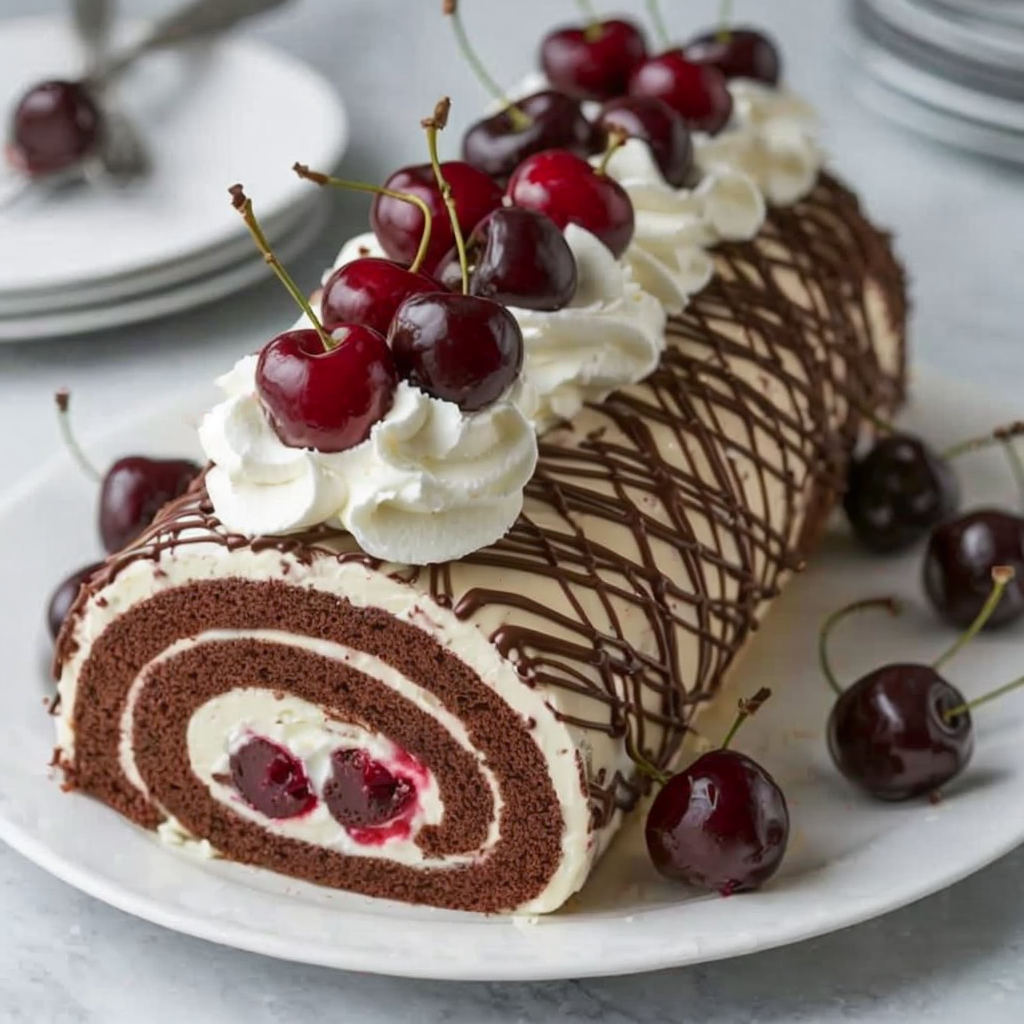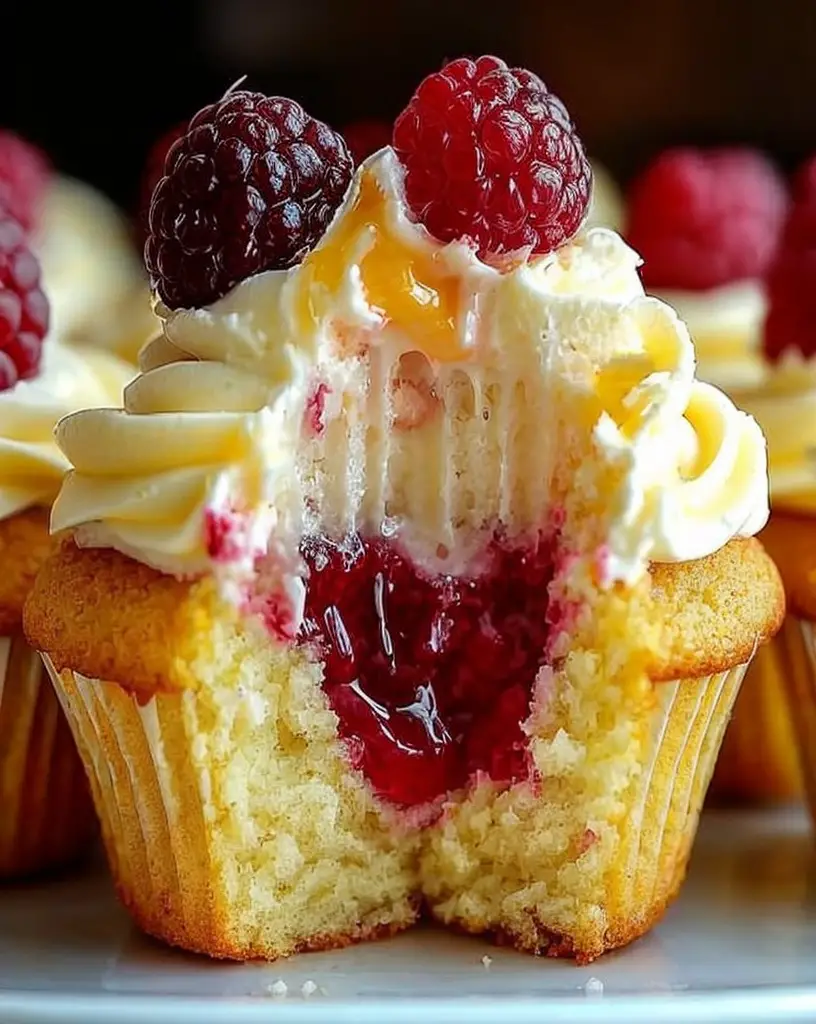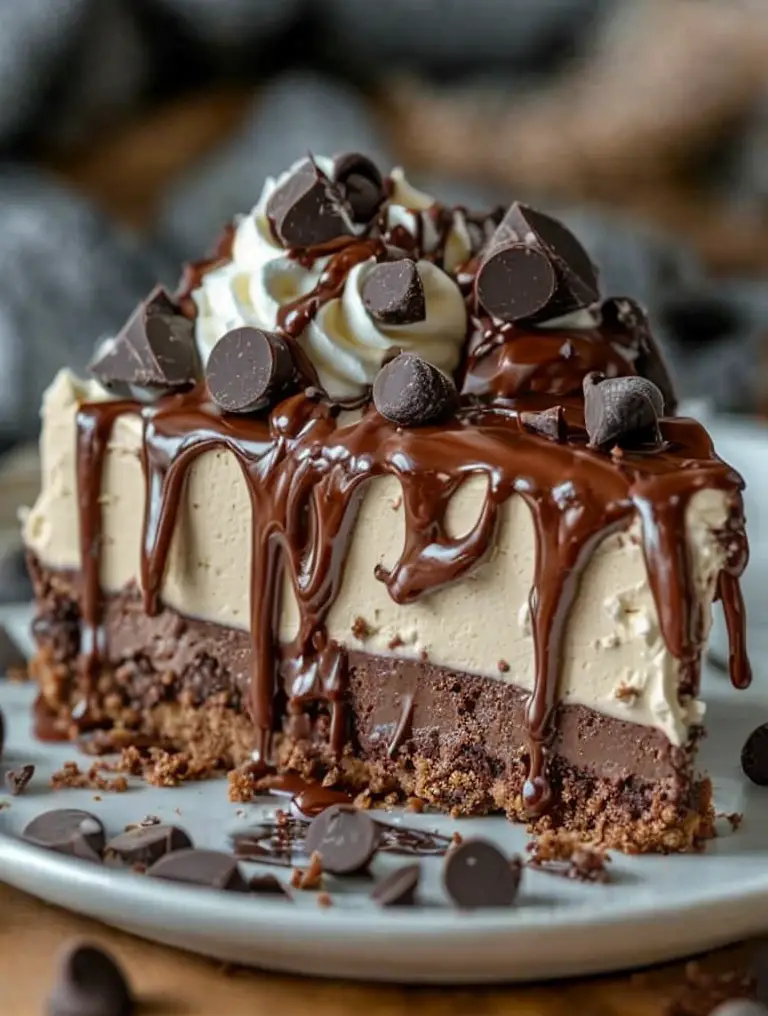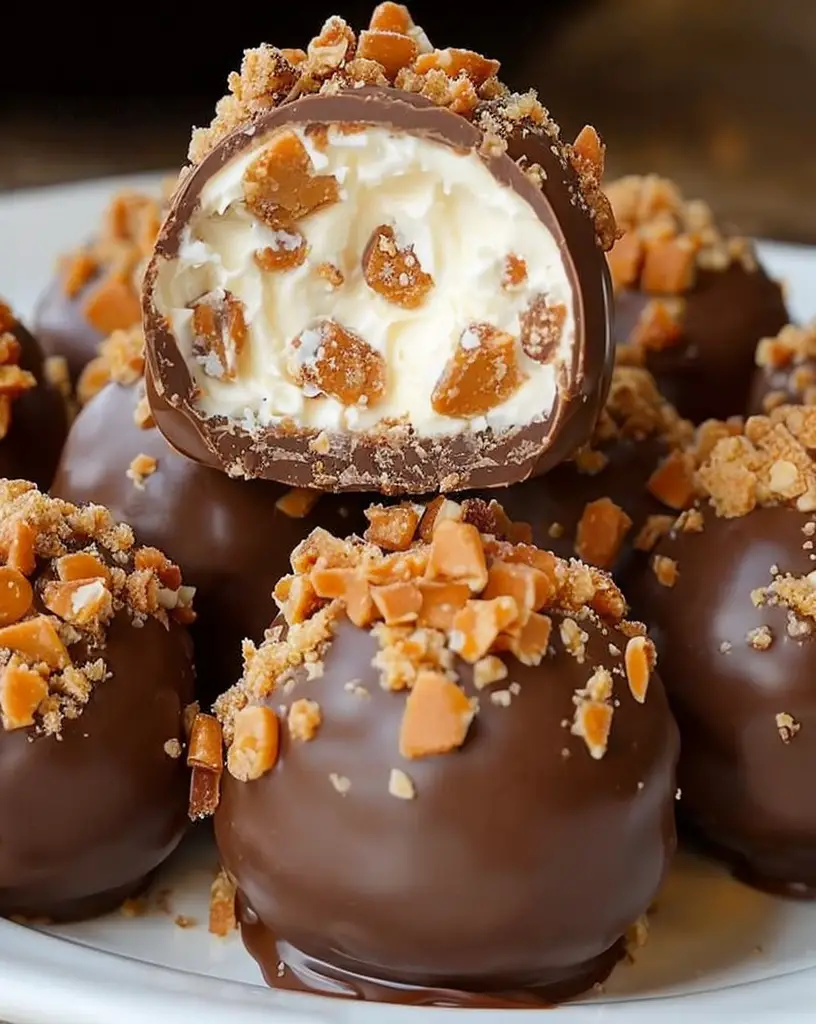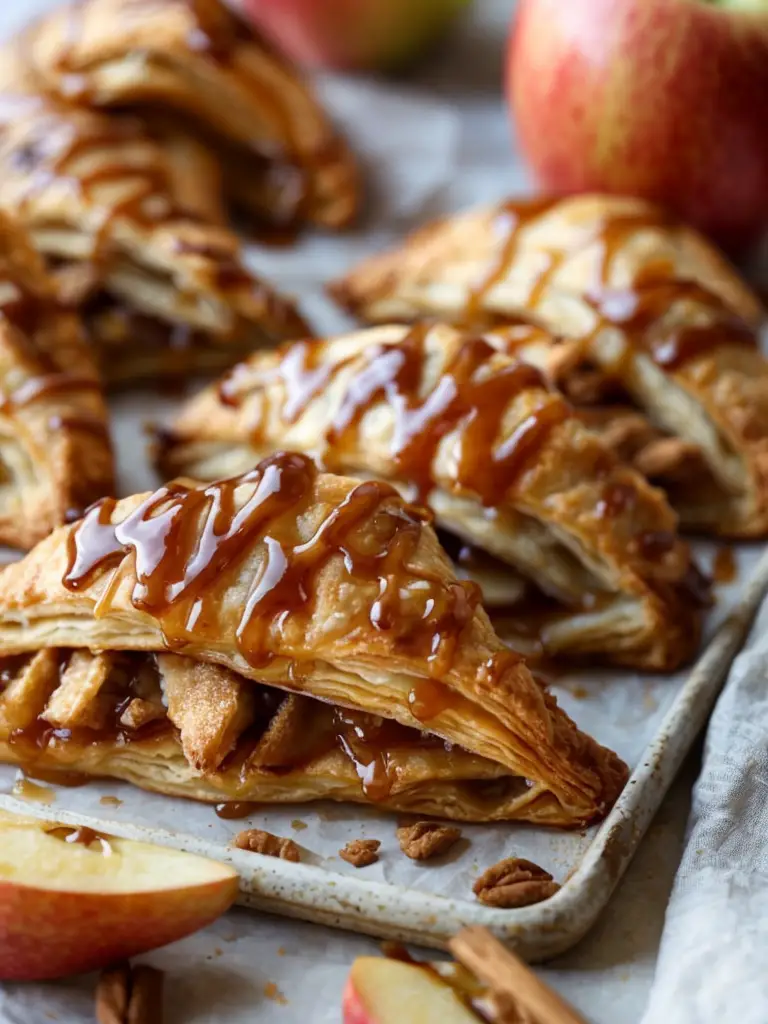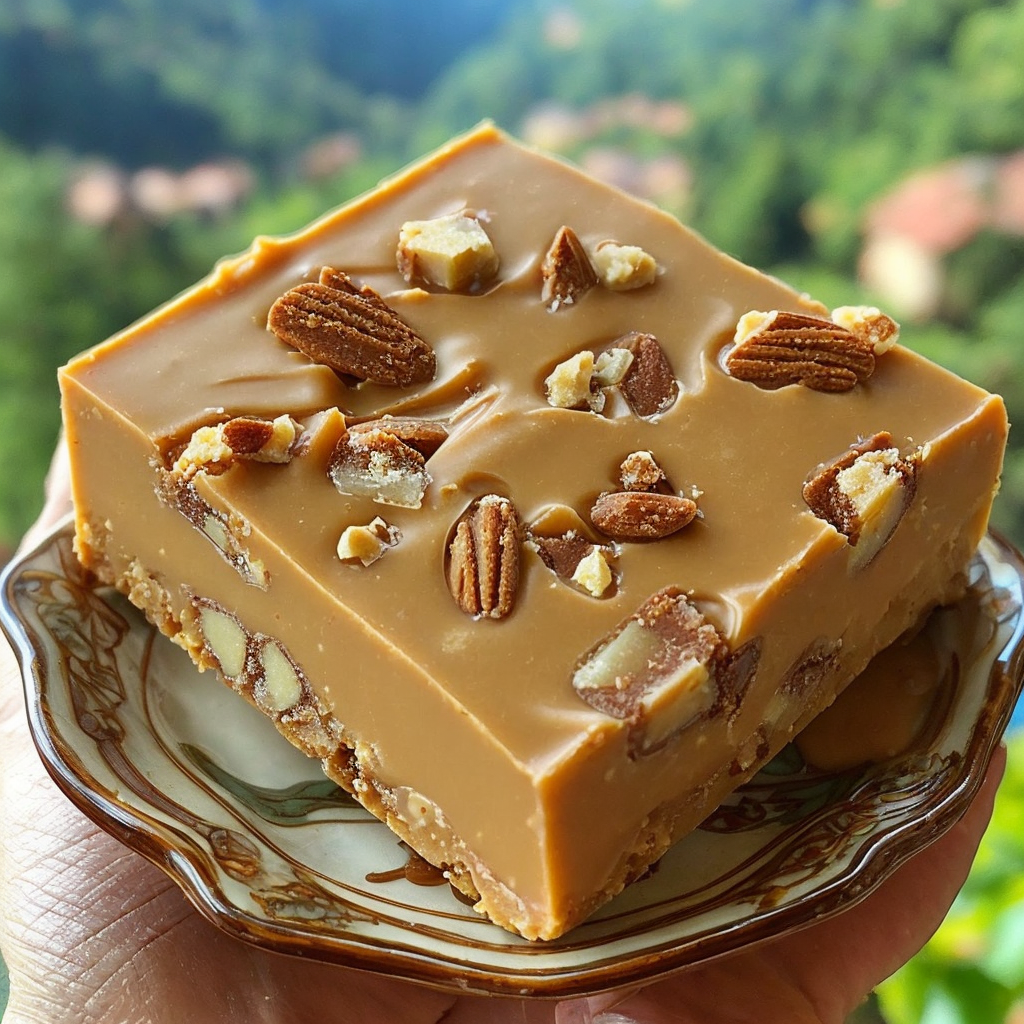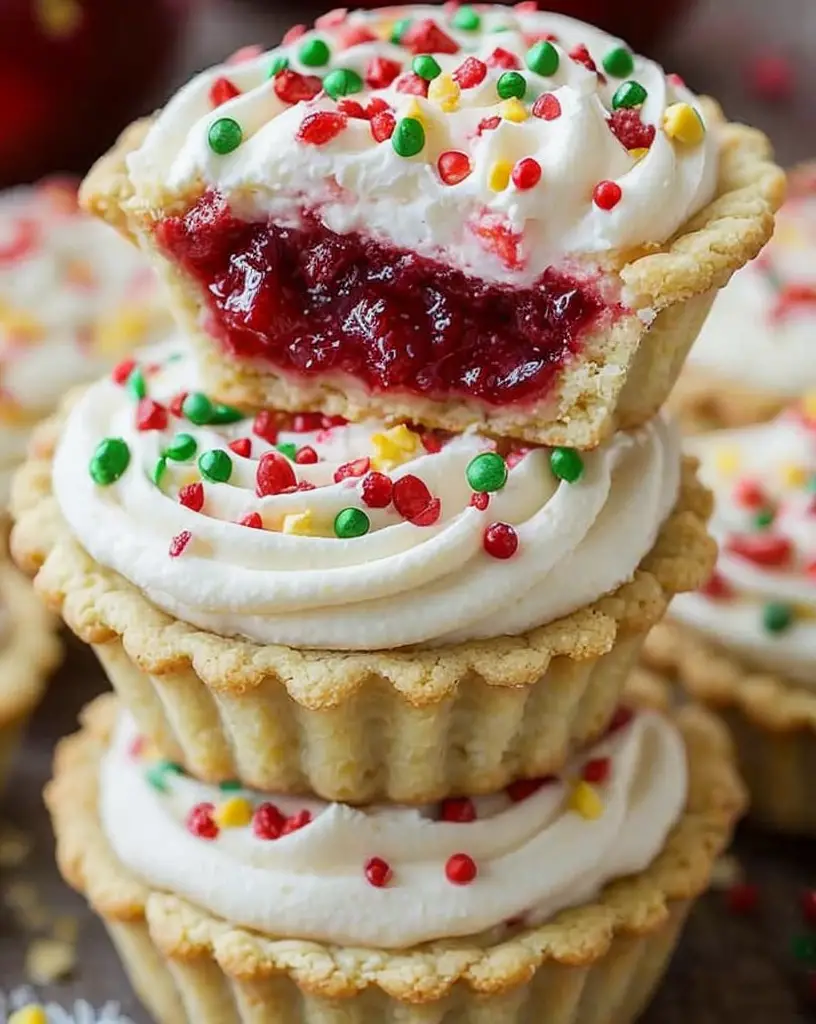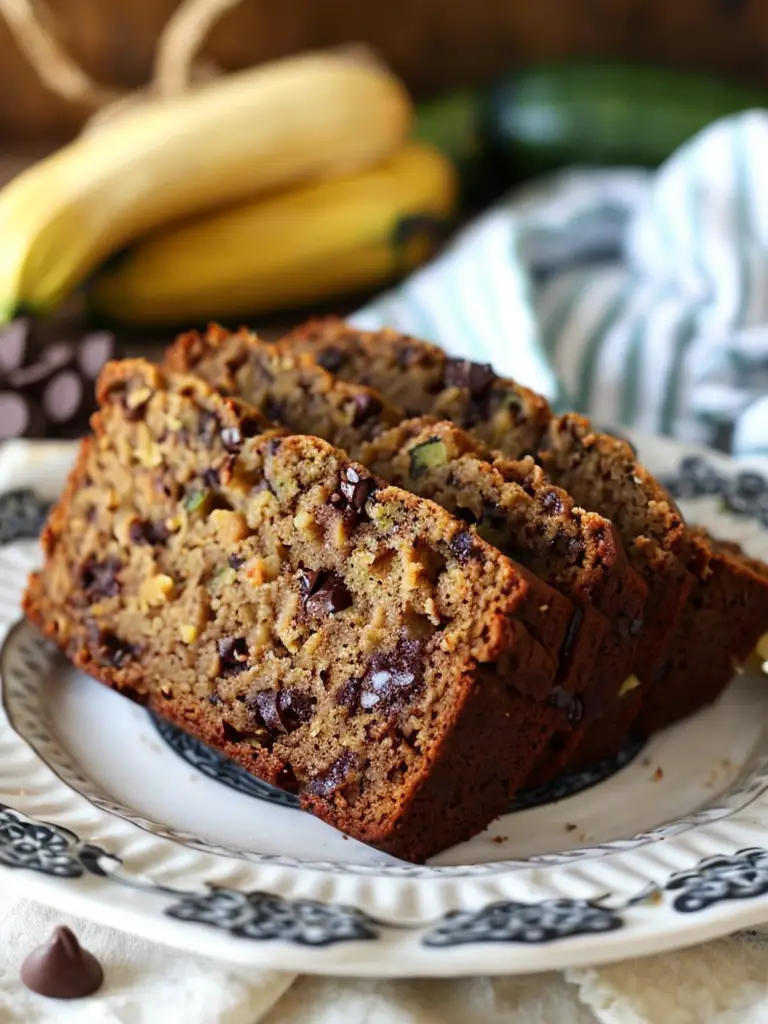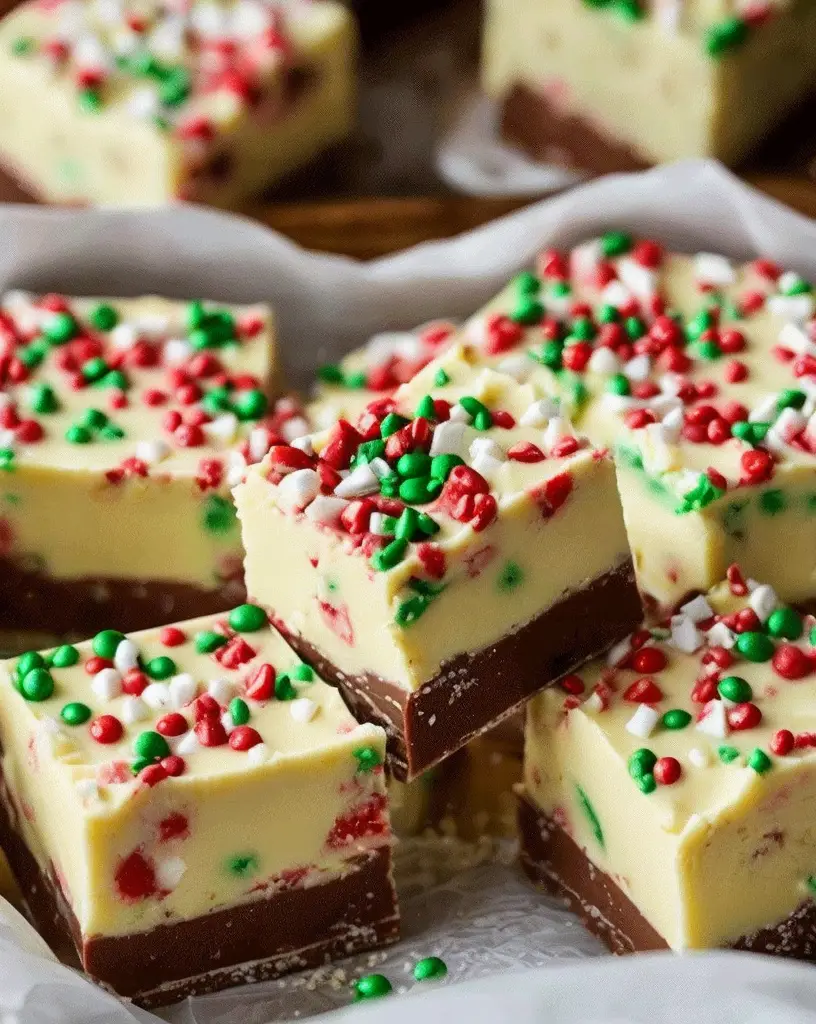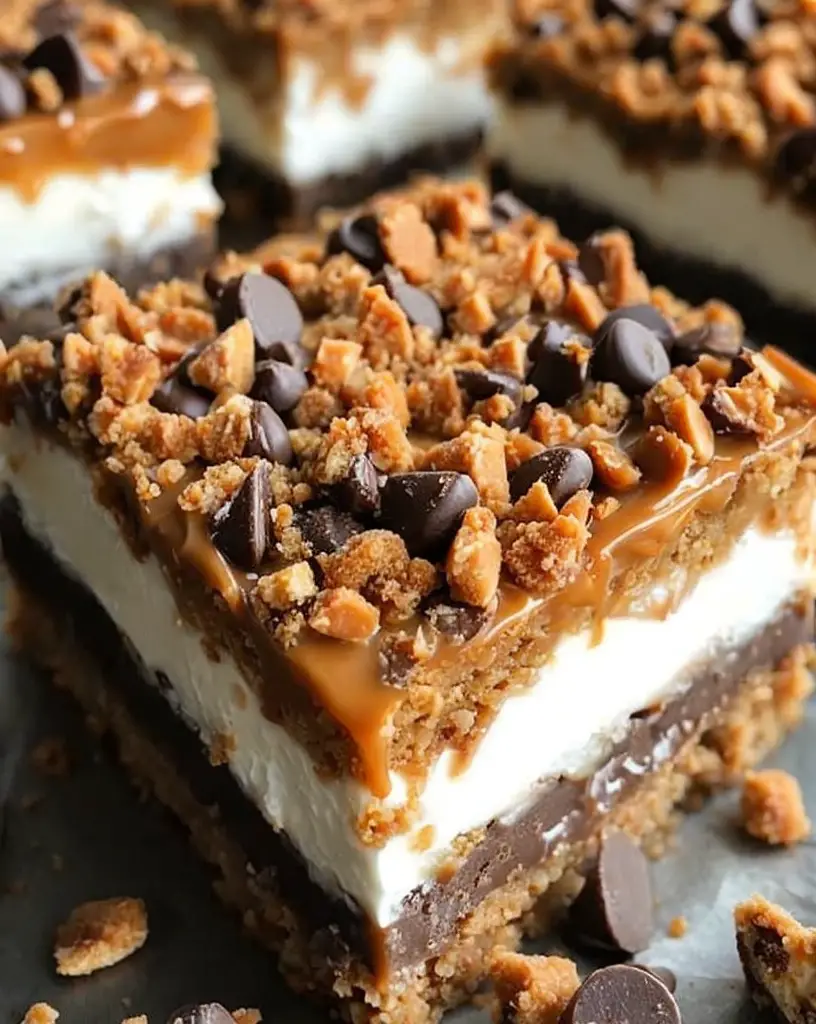Black Forest Roll Cake – A Chocolate & Cherry Delight
The Black Forest Roll Cake is a delightful twist on the classic Black Forest Cake, using a light chocolate sponge rolled with a luscious cream filling and tart cherries. This cake presents a wonderful balance of flavors—the rich chocolate complements the sweet, juicy cherries perfectly while the whipped cream adds a lightness that makes each bite heavenly. Whether you’re celebrating a special occasion or simply treating yourself, this indulgent dessert promises to entice chocolate lovers and cherry enthusiasts alike.
As you slice into this magnificent roll cake, the stunning contrast of rich brown chocolate and vibrant red cherries captures the eye. The fluffy cream peeking out invites you to take a bite, promising a taste experience that is both nostalgic and new. The ease of preparation combined with the elegant presentation makes the Black Forest Roll Cake a showstopper at any gathering.
Quick Recipe Highlights
- Flavor Profile: This dessert combines the rich taste of chocolate with the fruity tartness of cherries, creating a beloved classic that satisfies every sweet craving.
- Texture: The cake is light and fluffy, providing a soft bite contrasted by the luscious cream and juicy cherries, leading to a delightful mouthfeel.
- Aroma: The delightful aroma of chocolate fills the air, complemented by the sweet scent of cherries that tantalizes your taste buds.
- Visual Appeal: The rolling technique creates stunning swirls of chocolate, cream, and cherries, making for a visually striking centerpiece on any dessert table.
- Skill Level Needed: This recipe is medium in difficulty, requiring basic baking skills along with a little finesse in rolling the cake.
- Special Equipment: A jelly roll pan and parchment paper are essential for this recipe to ensure a successful bake and easy rollout.
Recipe Overview
- Difficulty Level: The medium complexity of this recipe makes it accessible for intermediate bakers who have some experience in making rolled cakes.
- Category: This dish fits perfectly in the dessert category, specifically for cake lovers looking for something unique and festive.
- Cuisine: Originating from Germany, the Black Forest Roll Cake combines traditional German chocolate cake elements with flavors inspired by the Black Forest region.
- Cost: With affordable ingredients like flour, eggs, and cherries, this cake is budget-friendly, particularly when cherries are in season.
- Season: This dessert is best enjoyed in late spring or summer when cherries are juicy and ripe, making the flavor even more pronounced.
- Occasion: Ideal for birthdays, anniversaries, and holiday celebrations, the Black Forest Roll Cake is a festive treat for any gathering.
Why You’ll Love This Recipe
The Black Forest Roll Cake offers an indulgent taste experience that harmoniously balances chocolate and cherry, creating an exceptionally satisfying dessert. The light texture of the cake and the fluffy whipped cream filling provide a delightful mouthfeel, making each bite melt in your mouth. It is a decadent treat that appeals to both chocolate lovers and those who appreciate the refreshing zest of cherries.
Preparation and convenience are also highlights of this recipe. Unlike traditional layered cakes, rolling this cake simplifies serving, making it easy to slice and share. The visually appealing swirls of chocolate and cherry create an impressive dessert while minimizing prep time, allowing you to enjoy more moments with your guests.
In addition to being a crowd-pleaser, this cake can be lighter than many alternatives, particularly when made with reduced sugar or low-fat cream. You can enjoy this decadent dessert without feeling guilty, making it suitable for various dietary preferences.
Social gatherings benefit from this cake, as its stunning presentation and exceptional flavor often make it the star of the dessert table. Conversations shift to praises and recipe requests as guests relish in its deliciousness, fostering camaraderie and shared joy around food.
Cost-effectiveness is an important aspect of the Black Forest Roll Cake. Most ingredients are pantry staples, making it financially accessible to prepare while still delivering an exquisite dessert experience that rivals store-bought cakes.
Historical Background and Cultural Significance
The Black Forest Roll Cake is a delightful variation of the traditional Black Forest Cake, whose origins trace back to the Black Forest region in Germany. This cake was originally inspired by the flavors of Schwarzwälder Kirschtorte, a layered chocolate cake filled with cherries and whipped cream. Just like its predecessor, the roll cake captures the essence of the Black Forest’s lush cherry orchards and renowned chocolate delicacies.
Culturally, the Black Forest Cake holds a significant place in German culinary heritage. It reflects the region’s rich agricultural history of cherry production and the art of baking with chocolate. Through variations like the roll cake, this dessert format emphasizes both tradition and creativity, enabling bakers to enjoy the essence of Black Forest flavors in new forms.
Over the years, the recipe has evolved to include many adaptations, including variations to accommodate different dietary preferences such as gluten-free or vegan. Modern twists have made it easier to prepare without sacrificing flavor, allowing fans of the classic dessert to explore new ways to enjoy it.
Regionally, while the Black Forest roll cake is celebrated in Germany, its popularity has led to greater acceptance and adaptation worldwide. From bakeries to home kitchens, this cake continues to inspire bakers to create delicious iterations that honor its flavorful foundations while embracing contemporary tastes.
Ingredient Deep Dive
Chocolate: Chocolate is a beloved ingredient that adds depth and richness to desserts. It has a long history dating back to ancient civilizations, where cacao beans were a form of currency and center of culinary traditions. In the realm of nutrition, dark chocolate offers antioxidants and potential heart-healthy benefits, while its creamy texture enhances the overall experience of desserts. When selecting chocolate, opt for high-quality brands with cacao content between 60-80% to maximize flavor. Store chocolate in a cool, dry place to preserve its unique characteristics.
Cherries: Cherries, particularly tart varieties, are synonymous with the Black Forest region. This fruit boasts a rich cultural background as a key ingredient in traditional pastries. Cherries are not only delicious but also provide nutritional benefits such as vitamin C and fiber. When purchasing cherries, always look for firm, bright-colored fruits without blemishes. Store fresh cherries in the refrigerator and consume within a few days to enjoy their peak flavor. For a twist, consider using frozen cherries; just be sure to adjust for added moisture in your recipe.
Common Mistakes to Avoid
- Overbaking the cake: This can lead to a dry texture. Keep an eye on the bake time and perform the toothpick test to ensure moisture.
- Not cooling the cake properly: Rolling a hot cake can result in cracks. Allow it to cool in the pan before turning it out.
- Using too much filling: Overstuffing can cause the roll to break. Spread a thin, even layer of filling for best results.
- Poorly preparing the pan: Not lining the pan can lead to sticking. Make sure to use parchment paper and grease the sides.
- Rolling too tightly: A tight roll can force filling out. Roll gently to maintain structure without compressing the cake.
- Skipping the chilling step: Allowing the rolled cake to set in the fridge helps it maintain shape. Don’t skip this crucial step!
- Using the wrong sugar type: For whipping cream, use granulated sugar, as powdered sugar may alter the desired texture.
- Not tasting before serving: Ensure the cake’s flavors are well balanced. Adjust sweetness as needed before serving.
- Ignoring recipe ratios: Baking is a science. Stick closely to ingredient ratios for consistent outcomes.
- Inadequate ingredient prep: Measure and prepare all ingredients before starting. It streamlines the process and prevents mistakes.
Essential Techniques
Cake Rolling: This technique is crucial for achieving a beautiful roll cake. To master it, carefully remove the cake from the pan while it is still warm and place it onto a clean kitchen towel dusted with powdered sugar. Roll the cake with the towel while it’s still warm to prevent cracking. Aim for a gentle approach to avoid compressing it. After rolling, allow it to cool completely before adding the filling to ensure it retains its shape when unrolled later.
Whipping Cream: Whipping cream to the right consistency is essential for your roll cake. Use chilled cream and a cold mixing bowl for optimal results. Start at medium speed and gradually increase to high until soft peaks form. Avoid whipping too long to prevent creating butter. It’s best to stop just before firm peaks, maintaining a fluffy texture for spreading.
Pro Tips for Perfect Black Forest Roll Cake
1. Use fresh, high-quality ingredients. Fresh cherries and premium chocolate make a significant difference in taste.
2. Always preheat your oven. A properly heated oven ensures even baking and prevents soggy spots.
3. Be mindful of the filling. Add a tangy element, like a splash of cherry juice, to elevate your cream mixture.
4. Experiment with flavors. Add a hint of vanilla or almond extract to the cream for extra flavor.
5. Keep an eye on the baking time. Ovens can vary; start checking for doneness a few minutes early to avoid overbaking.
6. Allow the cake to cool completely before adding the cream. Filling on a warm cake can cause it to become soggy.
7. Don’t be afraid to personalize. Try incorporating different fruits or flavoring in your cream to make the recipe your own.
8. Practice makes perfect. If your first roll doesn’t look perfect, keep trying! Each attempt helps with technique.
Variations and Adaptations
One of the beauty of the Black Forest Roll Cake is its adaptability. For regional variations, consider incorporating local fruits, such as strawberries or raspberries, for a unique take on the classic flavors. Seasonal adaptations can include using pumpkin puree or spices in the fall, transforming this chocolate delight into a cozy dessert fit for autumn events.
For dietary modifications, going gluten-free is achievable by substituting standard flour with almond or coconut flour, ensuring a deliciously nutty flavor profile to the cake. If you’re looking to reduce sugar, consider using a natural sweetener like stevia or honey in the whipped cream, while still retaining the cake’s charm.
Flavor variations can also be explored by adding different extracts to the cream filling, such as peppermint for a wintery twist or citrus zest for a refreshing summer dessert. The texture can be altered by filling the cake with a layer of crunchy chocolate or almond pieces, adding a satisfying crunch with each bite.
Finally, presentation alternatives enhance the visual appeal. Consider dusting the rolled cake with cocoa powder, or garnishing with mint leaves and chocolate shavings to elevate the cake’s look on the dessert table.
Serving and Presentation Guide
When serving your Black Forest Roll Cake, presentation is key. Start by slicing the cake into even pieces, ensuring each slice reveals the beautiful swirl of chocolate, cream, and cherries. For an appealing display, place slices on a decorative platter or individual dessert plates. Elevate the visual aspect by garnishing each slice with a dollop of whipped cream, chocolate curls, and fresh cherries.
Consider traditional accompaniments, such as vanilla ice cream or a light dusting of powdered sugar, to enhance the cake’s flavor and presentation. Temperature matters; serve the roll cake chilled or at room temperature to showcase its softness and creamy filling.
Portion control tips include slicing the roll on a diagonal for a more elegant presentation, making it appear larger and more inviting. If serving at a party, provide small dessert forks to encourage guests to savor each bite.
Wine and Beverage Pairing
Pair this decadent dessert with a rich red wine, such as a Pinot Noir or Merlot, which complements the chocolate and cherry flavors beautifully. For a sparkling option, consider a fruity Prosecco that refreshes the palate between bites.
If you prefer non-alcoholic alternatives, a vibrant cherry soda or homemade cherry lemonade can create refreshing contrasts to the creamy cake. For a warm beverage pairing, serve with a nice cup of coffee or espresso; its bold flavors enhance the richness of the dessert while calming the chocolate’s sweetness.
Pay attention to serving temperatures—wines should be served at room temperature, while carbonated drinks are best chilled to balance the decadent richness of the cake.
Storage and Shelf Life
To preserve your Black Forest Roll Cake, store it in an airtight container in the refrigerator. Ideally, consume the cake within 2-3 days for optimal freshness, as the cream can begin to lose its texture over time. If you want to extend shelf life further, consider freezing the rolled cake before adding the cream layer.
For freezing, wrap the unfilled cake tightly in plastic wrap and then in aluminum foil. When ready to enjoy, allow the cake to thaw in the refrigerator overnight and fill it just before serving. Signs of spoilage to watch for include an off odor or sour taste to the cream.
For reheating instructions, avoid microwaving the rolled cake directly, as it may alter the texture. Instead, allow the thawed cake to sit at room temperature for a while before serving to entice the flavors once again.
Make Ahead Strategies
Making the Black Forest Roll Cake ahead of time is a fantastic strategy for busy bakers. The sponge cake can be prepared a day or two in advance, allowing it to cool and set properly. Store the cooled cake well-wrapped to prevent drying.
Once you’re ready to serve, fill and roll the cake on the day of your event to maintain the texture of the cream filling. For those pressed for time, consider preparing the filling a day in advance, storing it properly in the refrigerator, which allows for easy assembly.
Quality impact remains high when the cake is made ahead; however, for a fresher taste, adding elements like whipped cream should be done just before serving. Fresh elements, like grated chocolate or freshly diced cherries as a topping, can also be sprinkled just before presentation to create a stunning dessert that looks and tastes recent.
Scaling Instructions
When scaling the recipe, if you plan to halve it, simply reduce the ingredient quantities proportionally. This approach ensures you don’t miss out on any essential components, maintaining the fundamental flavors and textures crucial to the cake’s success.
For doubling or tripling the recipe, anticipate potential adjustments to bake time and the size of your baking pan. Ensure you have properly sized pans that can accommodate larger quantities without affecting the cooking evenly.
Timing modifications may also include longer bake times when using larger pans. Always check for doneness in the cake center and adjust based on baking conditions.
Storage considerations are vital; ensure that you have enough containers on hand or consider gifting some of the extras to friends or family to share the deliciousness of your efforts.
Nutritional Deep Dive
Nutritionally, the Black Forest Roll Cake offers a delightful balance. A standard slice typically provides a moderate amount of carbohydrates primarily contributed by sugar and flour. The presence of cherries introduces beneficial antioxidants, vitamins C and K, promoting overall health.
In terms of fat content, the whipped cream contributes saturated fats, which should be consumed in moderation. Consider using light cream or substituting non-dairy options for a healthier version to reduce calorie counts without sacrificing flavor.
Portion analysis suggests serving sizes should be mindful, given the cake’s rich ingredients. Balancing a no more than a slice with a healthy meal can assist in maintaining a well-rounded diet, particularly when entertaining.
Additionally, weight management tips might suggest enjoying smaller slices and savoring slower to truly appreciate the flavors—this can often lead to overall satisfaction despite smaller servings.
Dietary Adaptations
For those requiring a gluten-free option, use a simple blend of gluten-free flour and almond flour to create a deliciously moist roll cake without sacrificing flavor or texture.
Individuals needing dairy-free alternatives can replace cream with coconut cream or almond milk-based whipped cream, allowing for modifications that cater to diverse dietary needs.
To accommodate those pursuing vegan options, utilize flax eggs as substitutes, and opt for cashew cream to mimic the traditional creamy filling. This adaptation retains the spirit of the dish while aligning with vegan standards.
Low-carb and keto dieters can benefit from using almond flour with sugar substitutes like erythritol, adapting their favorite flavors into a diet-friendly treat.
For those following a paleo diet, avoid processed sugars and dairy, leaning into natural sweeteners like honey and full-fat coconut milk, which result in an equally enticing dessert without compromising dietary principles.
Troubleshooting Guide
If your cake ends up too dry, check your measurements, as wrong proportions can lead to density issues. Avoid overbaking to maintain that moist texture. If the flavors lack balance, try adjusting sweetness slowly.
Improper rolling can lead to cracks. To prevent this, ensure adequate cooling and use a light touch when rolling techniques are implemented.
For equipment challenges, such as issues with pans sticking, always use parchment paper or non-stick spray to ease the release. Ingredient substitution errors should be carefully managed; always measure accurately, particularly when using alternative sweeteners or flours.
If timing is a concern, remember to set multiple timers and prepare as much as possible ahead, so you maintain a steady progress in your baking.
Recipe Success Stories
Our community of bakers has experimented with the Black Forest Roll Cake, leading to incredible stories of success. Many have adapted the recipe for special diets, achieving rave reviews during family gatherings or celebrations.
Some bakers share how the simpler roll format has made cakes more approachable for beginning bakers, allowing their children to join in the baking fun. These shared adaptations promote creativity, encouraging everyone to put their unique spin on the traditional roll cake.
Photographic success is also noteworthy, with users sharing stunning images of their cakes on social media. These visuals help to inspire others to attempt the cake, proving that with a little patience and practice, beautiful results are achievable.
By connecting through recipe variations, the community is empowered to share tips, learn from each other’s experiences, and feel confident in their baking journeys, ultimately celebrating the joy of creating memorable desserts.
Frequently Asked Questions
What if my cake cracks during rolling? If the cake cracks, don’t worry! Just fill it as best as you can and it will still taste amazing.
How can I make it gluten-free? You can substitute regular flour with a gluten-free flour blend or almond flour for a delicious variation.
Can I use frozen cherries? Absolutely! Just thaw them and pat them dry to prevent excess moisture in your cake.
Is there a non-alcoholic option for pairing? Yes, cherry soda or sparkling grape juice pairs beautifully with this dessert.
What’s the best way to store leftovers? Store any leftover cake in an airtight container in the fridge, and it should be consumed within a few days.
Can I modify the cream filling? Yes! Feel free to add flavorings like vanilla extract or chocolate to customize the cream.
How can I avoid a soggy bottom? Be sure to properly pre-bake the cake layer without overstuffing it with the filling, and don’t skip the chilling step.
What type of chocolate should I use? High-quality dark chocolate (60-70% cacao) works best, enhancing flavor without being too sweet.
Can I use dairy-free cream? Yes, coconut cream or other non-dairy alternatives work well for those avoiding dairy.
Additional Resources
If you enjoyed this Black Forest Roll Cake, consider exploring related desserts like a classic Black Forest Cake, Chocolate Swiss Roll, or Cherry Clafoutis for more indulgent options.
For tips on achieving perfect sponge cakes, check out our baking technique guides covering the fundamentals of cake batter preparation and baking time adjustments.
Seasonal variations like Peach Roll Cake or Strawberry Roll Cake may spark inspiration, as they invite you to experiment with flavors that reflect the bounty of summer and spring.
For equipment recommendations, ensure you have quality mixing bowls, whisking tools, and a reliable jelly roll pan to make your baking journey seamless.
Join the Conversation
Recipe sharing is a wonderful way to connect with fellow bakers! Share your photos and experiences of making the Black Forest Roll Cake on social media platforms. Your photography skills can ignite inspiration and motivate others to try their hand at baking.
Engage with other cooking enthusiasts through reviews and feedback, contributing to a vibrant community filled with creativity and enjoyment.
Participating in discussions about recipe variations encourages exploration of new flavors while opening the door for more engaging interactions about baking experiences. Let your baking journey be a shared adventure as you cook and create delicious memories with loved ones!
The Recipe
Black Forest Roll Cake
Serves: 8 servings
Prep Time: 30 mins
Cook Time: 15 mins
Total Time: 45 mins
Kitchen Equipment Needed
- Jelly roll pan
- Parchment paper
- Mixing bowls
- Electric mixer
- Cooling rack
Ingredients
- 1/2 cup all-purpose flour
- 1/3 cup cocoa powder
- 4 large eggs
- 1/2 cup granulated sugar
- 1/4 cup milk
- 1/4 cup vegetable oil
- 1 cup heavy whipping cream
- 1 cup tart cherries, pitted and halved
- 1/4 cup powdered sugar, for sweetening cream
- Chocolate shavings, for garnish
Directions
- Preheat the oven to 350°F (175°C) and line the jelly roll pan with parchment paper.
- In a bowl, whisk together flour, cocoa powder, and salt. Set aside.
- In a separate mixing bowl, beat eggs and sugar until pale and fluffy.
- Gradually add dry ingredients to the egg mixture, folding gently.
- Incorporate milk and vegetable oil, mixing until combined.
- Pour the batter onto the prepared pan and spread evenly.
- Bake for about 15 minutes or until the cake springs back when touched.
- Remove from the oven and let cool slightly before rolling with a clean kitchen towel.
- While cooling, whip heavy cream with powdered sugar until stiff peaks form.
- Once the cake is cool, carefully unroll it and spread whipped cream evenly, topping with cherries.
- Roll the cake back up and refrigerate for at least an hour before serving.
- Slice and garnish with chocolate shavings before serving.
Recipe Notes
- For a richer flavor, consider adding vanilla extract to the whipped cream.
- You can make the cake in advance and store it without the cream filling until ready to serve.
